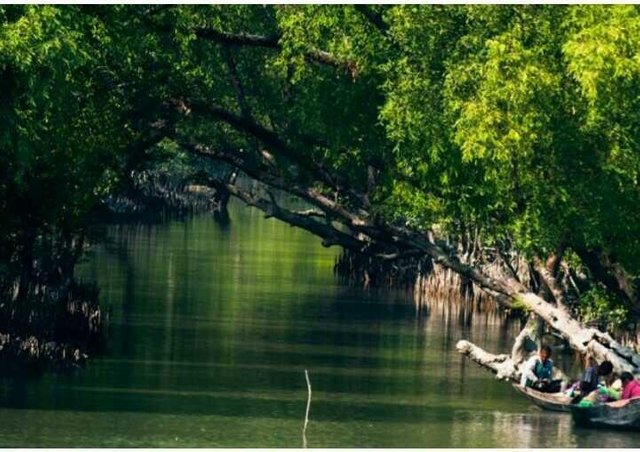
If you are asked to name some of the sights of Bangladesh, then the name of some of the first names in your brain will be named Sundarbans. In addition to the unique gathering and historical importance of numerous animals and birds including the Royal Bengal Tiger, this forest has endless natural beauty which is the attraction of touring tourists.
The land of Padma, Meghna and Brahmaputra, in the south-west of Bangladesh, has been built in part by Khulna, Bagerhat and Satkhira districts and parts of India, with the continuous natural beauty of this country. Its original area of about 6017 kilometers and part of India is approximately 10 thousand square kilometers. Though the Sundarbans were formed in an uninterrupted land boundary, it was divided into two sections, which were divided into two parts, one of which has been included in the world heritage as 'Sundarbans' (Bangladesh) and the other part 'Sundarbans National Park' (India). That is, the Sundarbans has been incorporated twice in the UNESCO World Heritage list.

The original 10 thousand square kilometers of the Sundarbans; Image Gratitude: Abhijit Choudhury
Short history and structure
Many people believe that Sundarbans have been named from the forest of the sea (sea-forest) or indigenous Chandra-Bandh. But the most recognized explanation is that the Sundarbans' main tree named Sundari has been named after Sundarbans.
There is not much information about the origin of the Sundarbans, but it is believed that the erosion of sediments, sand and gravel of the Himalayas created chars by the Padma and Brahmaputra on the coast for thousands of years. On the other side, due to the sea shore, the charity has been dried in the salt water and the sediments have been deposited. There are some varieties of diverse species that have been born there, and mangroves forests or saltwater forests ### have been grown in the past.
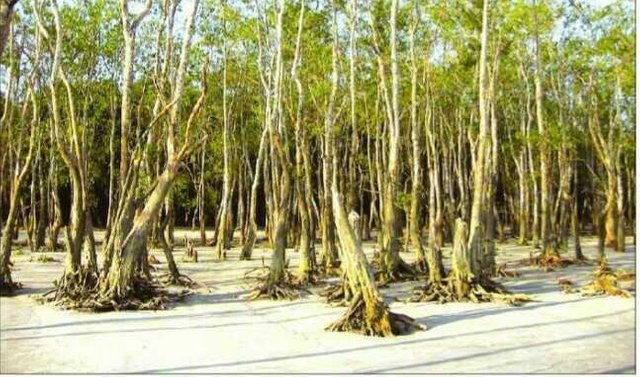
Sundarbans' main plant named after 'Sundari' tree named after Sundarbans; Photo by bajroshakti.com
It is not possible to conduct survey very easily in the Sundarbans, full of water and wildlife. The first maps were created when the East India Company took possession of the Sundarbans region in 1757. At that time, the Sundarbans area was about 17 thousand square kilometers. Then gradually the habitat of the Sundarbans was gradually decreasing, its volume decreased gradually. Later, when the British government accepted its copyright, the first survey was conducted in 1829. In the year 1878, the Sundarbans were declared as reserve forests and the responsibility for the next year was entrusted to the forest department. In this way, after the independence of India in 47 years, this division of natural beauty became divided into two parts.
Plants and animals
Compared to the other mangrove forests in the world, there is a great deal of difference between the plants of the Sundarbans. Because the Sundarbans is not only salt water, but it also flows through the fields of fresh water. This feature has separated the Sundarbans from other mangrove forests worldwide.
Sundarbans is the beauty of its beautiful tree. Needless to say, the most noticeable plants in this forest are beautiful trees. Besides, the holder of the forest variety of Geva, Garna and Kewora Sundarbans. Since most of the plants are evergreen, their physiological and structural adaptation methods are ### almost the same.
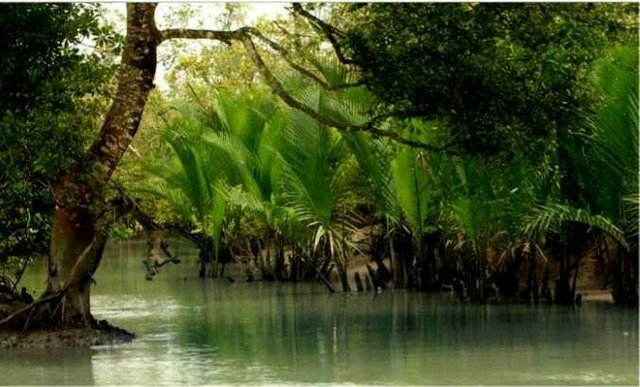
Sundarban's evergreen vegetable; Photo: xnmoin.blogspot.com
In 1903 Pine wrote a book on the Sundarbans. There are 334 species of plants in the Sundarbans, there are 334 species of plants. And according to the available data, 35 species of 50 species of mangrove forests are found in our Sundarbans. In the Sundarbans, mangrove trees are also dominated by mangrove forests. Among them, Shaon, Pulle Reed and Gulpata are one of the most important.
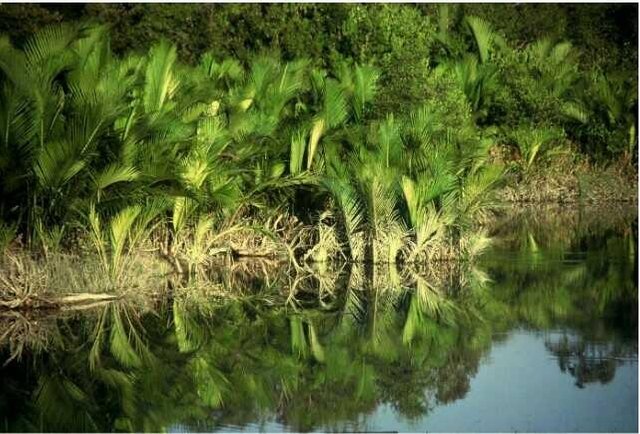
Sundarbans famous palm tree; Photo Gratitude: Faizul Latif Chowdhury
The name of the most prominent animal in the animal diversity is the Royal Bengal Tiger, whose home is Sundarbans. It is said that the Royal Bengal Tiger is the most handsome of all the tigers worldwide.
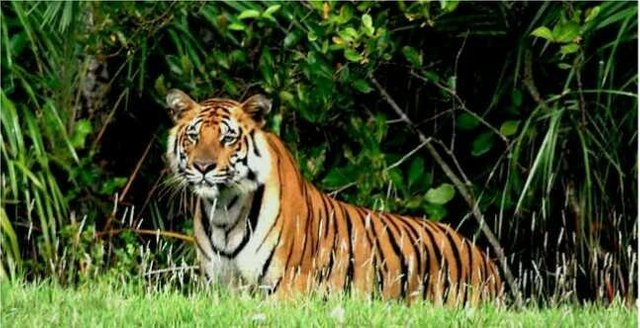
Royal Bengal Tiger of the Sundarbans; Photo: sundarbantours.com
In the 1950s, tigers could be seen almost everywhere in Bangladesh. The last Royal Bengal Tiger was observed in Madhupur and Gazipur in Dhaka in 1966. Then the number of tigers gradually decreases in Bangladesh. And now Sundarbans is the only dwelling place of this tiger. However, the number of tigers of the Sundarbans is decreasing day by day. According to the 2004 census, the number of tigers in the Sundarbans was 440, but in a private census of 2006 it is only 200-250 that the number of tigers in India is more than 1,400 plus. And according to the latest 2015 census, the number of tigers in Bangladesh is only 106! Among the other animals of the Sundarbans, turtles, coughs, lizards, oysters, deer, crocodiles are notable.
There are about 50 species of mammals in this forest. Among them are Royal Bengal Tiger, Chitra deer, Maya deer, Rhesus monkey, Forest cat, Leipard, Szuru, Oud and wild pig head.
Beautiful country. I'm very passionate about travels. Traveling is my life!!
I want to visit Bangladesh, adding it to my list. Thanks for sharing.
Downvoting a post can decrease pending rewards and make it less visible. Common reasons:
Submit
I am a Bangladeshi citizen. I am happy to be born in Bangladesh.
Bangladesh is my pride.
Embassy to travel to Bangladesh
Thank you friend
Downvoting a post can decrease pending rewards and make it less visible. Common reasons:
Submit